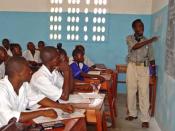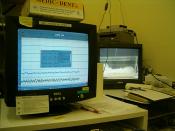The Emotionally Disturbed Child
I. Introduction
II. Definition of Emotionally Disturbed
III. Identification of the Emotionally Disturbed
IV. Causes of Emotional Problems
V. Teaching and Managing the Emotionally Disturbed
VI. Conclusion
Introduction
The major purpose of this paper is to present the emotionally disturbed child as a learning problem which parents and teachers can do something about. Emotional conflicts and defects limit perceptual and behavioral alternatives, restrict intake of knowledge. Individuals and emotionally disturbed to a minor, moderate, or severe degree are unable, to that degree, to profit from their educational experiences. Therefore, children whose educational progress will be handicapped by emotional conflicts or defects need to be identified early to reduce the effects of the disability.
We can enhance the growth and learning abilities of children unable to cope with school because of emotional difficulties. Children who are ineffective learners in school become more ineffective and troubled, as they grow.
The school like many institutions tends to reward the good and punish the bad. The problem addressed is, "Can children in trouble be helped early enough to change their course of school development." Among these problems are the series of questions associated with defining disturbances, its incidence, identifying the disturbed child, and determination of appropriate teaching and therapeutic techniques.
Definition of Emotional Disturbed
The term "emotional disturbance" is defined in many ways and is used somewhat loosely by both professionals and members of the lay public. Various terms such as maladjusted, deviant, delinquent and behavior disorder appear frequently in the literature. Emotional disturbance is characterized by inner tensions and anxiety, there is often a display of neurotic and psychotic behavior, which often interferes with the life of the child and others.
Eli Bower suggests that the term means children in school whose learning and behavior difficulties seem destined to...


